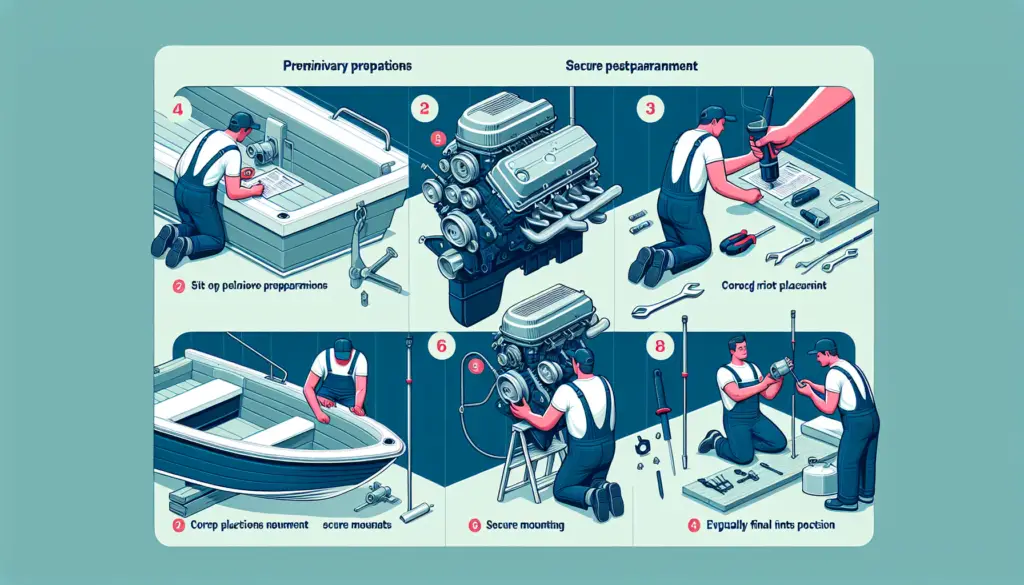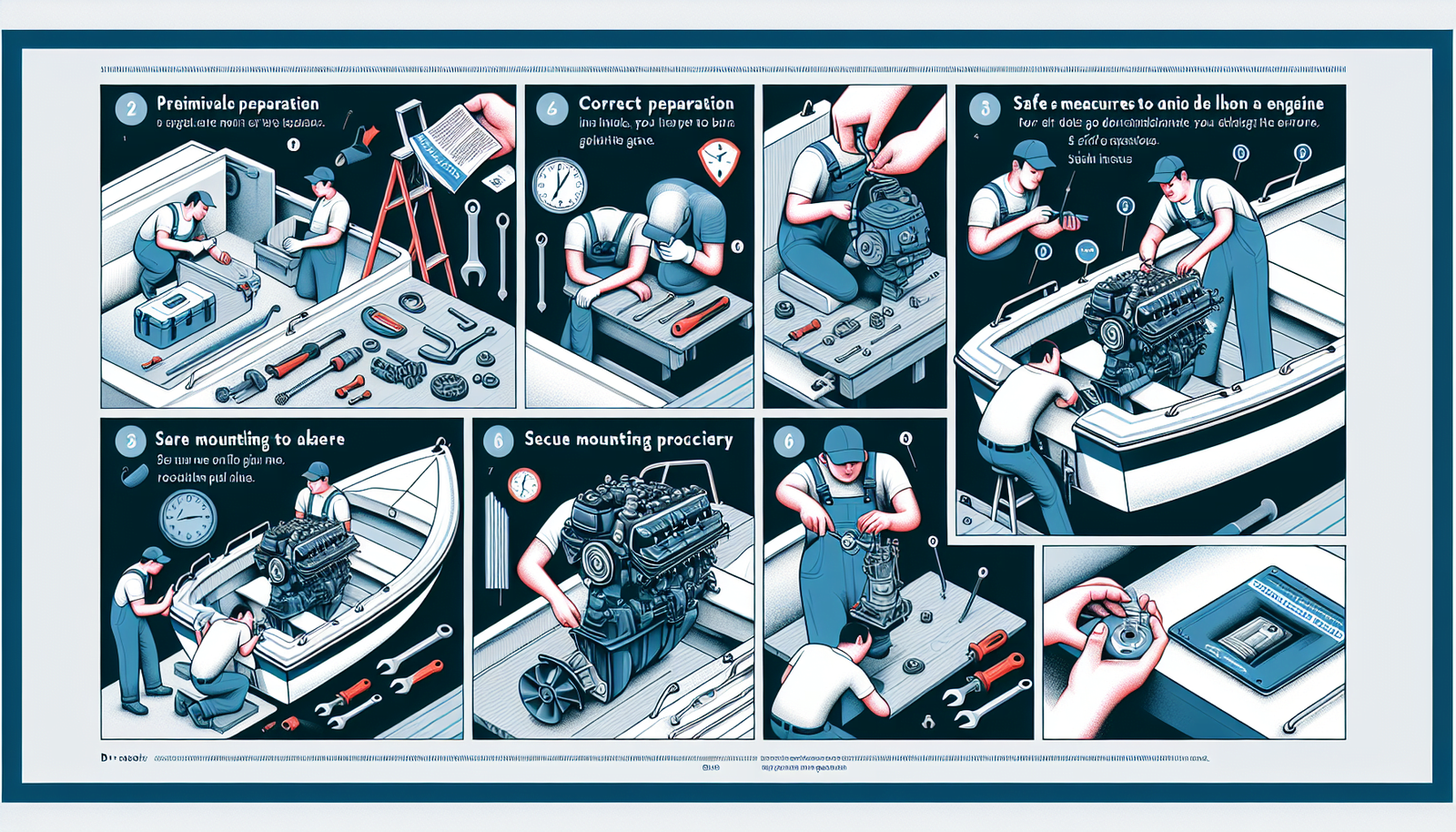Ready to take boating into your own hands? This article is just the thing for you. It’s designed to equip you with the know-how you need to install a boat engine all on your own. You’ll get the ins and outs of proper installation and safety precautions to ensure successful completion of the task. Ranging from engine choice to final setup, this article sets you on course for self-reliance and DIY mastery in the world of boating. Brace yourself for an insightful journey into the practical world of boat engine installations.

Understanding Your Boat Engine
Operating a boat is as much of an art as it is a science. As you venture into boating, it’s crucial that you understand the literal driving force behind your boat – its engine.
Knowing Your Engine Specifics
This journey is not so different from getting to know a new friend. Knowing your engine’s specifications implies being familiar with its horsepower, fuel type, size, and maintenance requirements. It would be best if you had a thorough grasp of these specifics before choosing an engine for your boat.
Learning About Different Types of Boat Engines
There are various types of boat engines, from inboard engines to outboard motors, each with a different system and purpose. Your choice depends on your boat’s size, weight, and use. Learn about these types to understand what would work best for your boat and boating style.
Understanding the Functionality of Boat Engines
Boat engines convert fuel into power, propelling the boat forward. They also power other functionalities on the boat like lights, instruments, etc. Understanding how your boat engine works will help in maintenance, operation, and troubleshooting.
Tools and Materials Needed
Any good handyman knows that the correct tools and equipment can make or break a project. When installing a boat engine, the right ones can make the task much simpler and safer.
Listing Essential Tools
Essential tools to have on hand include wrenches, screwdrivers, pliers, hammers, and marine grease. It would be best if you also had an engine hoist or crane to lift the engine into position.
Gathering Materials for Installation
Other materials for installation could include gaskets, fuel lines, filters, engine mounts, and cables. Make a checklist to ensure you gather all necessary items before beginning the installation.
Ensuring Safety Equipment
Proper safety equipment, such as gloves, safety glasses, and a fire extinguisher, is crucial to avoid accidents.
Selecting the Right Engine
Choosing the right engine for your boat is like finding the perfect pair of shoes – it needs to fit just right.
Factors to Consider When Choosing an Engine
Before settling for an engine, consider factors such as horsepower, weight, fuel efficiency, and maintenance requirements. An understanding of these factors can assist you in making the right choice.
Features of Different Engines
Different engines have unique features that could be the deciding factor. For instance, some engines may be quieter, more eco-friendly, or easier to maintain than others.
Choosing the Right Engine Size
Remember, size matters! Choosing an engine that is too small could mean your boat is underpowered, while one too big could make it unstable and unsafe. Ensure the engine size is compatible with your boat’s size and intended use.

Preparing for Installation
Installation requires proper preparation, akin to measuring twice and cutting once in carpentry.
Inspecting the Boat for Any Damages
Before installing a new engine, inspect the boat for any damages. Look for rust, cracks, leaks, or any other potential issues that could hinder installation or performance.
Cleaning the Engine Compartment
Next, get your hands dirty and clean out the engine compartment. It’s an essential step to ensure an environment conducive to installation.
Removing the Old Engine
If you’re replacing an old engine, make sure to safely disconnect and remove it, taking care not to damage the boat.
Positioning the New Engine
Positioning a new engine is like fitting a piece of the puzzle in the right spot.
Methods for Lifting the Engine
The engine should be hoisted into position, using an engine lift or crane. It must be done with utmost care to avoid accidents or damages.
Placing the Engine Perfectly
Once hoisted, guide the engine into the correct position carefully. Check with the installation manual or blueprint to ensure precision.
Checking for Proper Alignment
Once placed, double-check to ensure the engine is properly aligned with the boat’s mounting points and systems.
Connecting the Engine
After the engine is positioned correctly, it needs to be properly connected to function optimally.
Attaching the Engine Mounts
First, attach the engine mounts, ensuring they’re tightened securely.
Connecting the Fuel Lines
Next, connect the fuel lines to the engine, double-checking for secure and sealed connections.
Wiring the Electric Components
Now, wire all electrical components per the engine manual. Be mindful of connecting positive leads to positive and negative to negative to avoid an electrical mishap.
Connecting the Exhaust System
Lastly, connect the exhaust system to route engine exhaust out of the boat. Double-check for secure connections to prevent lethal gas build-ups inside the boat.
Ensuring Proper Ventilation
Proper ventilation is essential for your engine’s performance and the crew’s safety.
Understanding the Importance of Engine Ventilation
A well ventilated engine compartment prevents overheating, helps improve engine performance and longevity, and mitigates the risk of dangerous gas build-up.
Installing Ventilation Fans
A good way to ensure ventilation is installing ventilation fans. Check the boat manual for recommended specifications.
Checking for Proper Air Circulation
After installation, check to ensure air is properly circulating around the engine. This helps in heat dissipation and prevents any hotspots from forming.
Testing the Engine
Once everything else is done, it’s time for the moment of truth: testing the new engine.
Running the Initial Tests
Initial tests involve starting the engine and checking for normal operation. This includes observing oil pressure, engine temperature, RPM, etc., ensuring they are within the suggested range.
Inspecting for Possible Leaks
Check for any leaks in the fuel line, oil system, or cooling system. Any leaks could potentially lead to engine failure or a fire.
Ensuring Optimal Engine Performance
After running the initial tests and fixing any detected issues, run the engine for a more extended period to ensure optimal performance.
Maintaining Your New Engine
Like any mechanical device, your boat engine needs regular care and maintenance for optimum and prolonged functioning.
Regular Checks and Balances
Regularly check for wear and tear, corrosion, or any components that may need replacement. Regular oil changes are also vital for extending your engine’s lifespan.
Routine Cleaning and Upkeep
Cleaning your engine compartment regularly can help prevent a build-up of salt, dust, or debris that could potentially harm your engine.
Seeking Professional Help When Needed
If you encounter any significant issues, don’t hesitate to seek professional help. It’s better to be safe than sorry when taking care of your significant investment.
Troubleshooting Common Issues
Despite our best efforts, issues may arise. But don’t worry; here are some common troubleshooting tips.
Dealing with Engine Overheating
If the engine overheats, check the cooling system, oil levels, and ventilation. If the issue persists, professional help may be needed.
Troubleshooting Electrical Problems
For electrical problems, check all connections, fuses, and the battery. If you can’t locate the issue, it would be best to consult a professional.
Fixing Common Fuel Issues
Fuel issues could stem from clogged filters, water in fuel, or issues with the fuel pump. Always keep spare fuel filters on board to facilitate quick fixes.
In conclusion, installing a boat engine can be a rewarding endeavor. Understanding, installing, and maintaining your boat engine can help ensure many great voyages on the water ahead!

